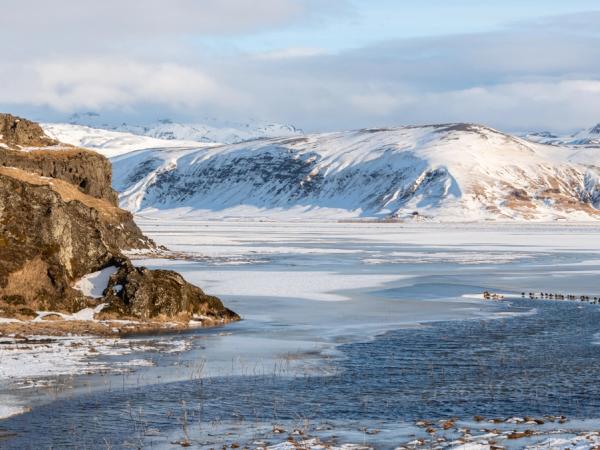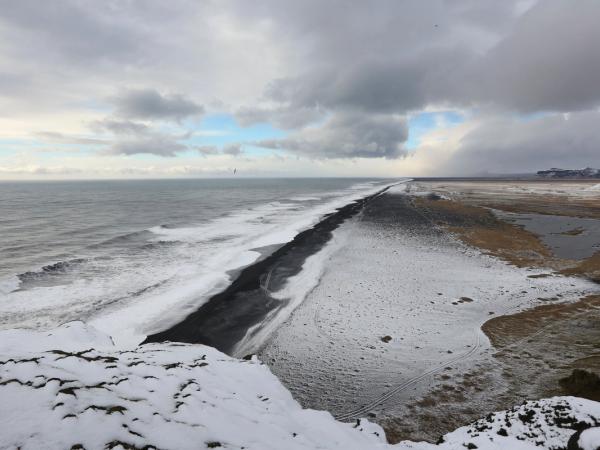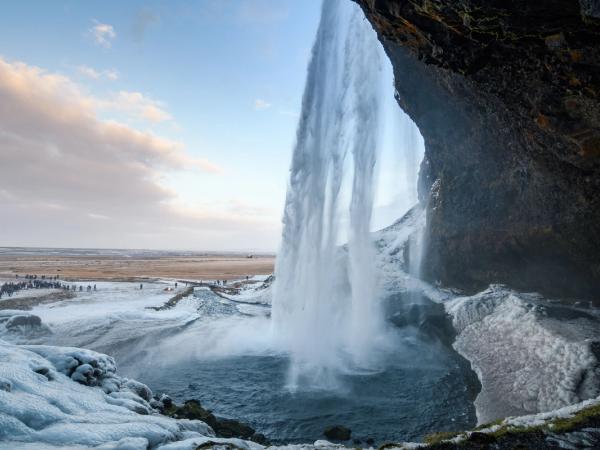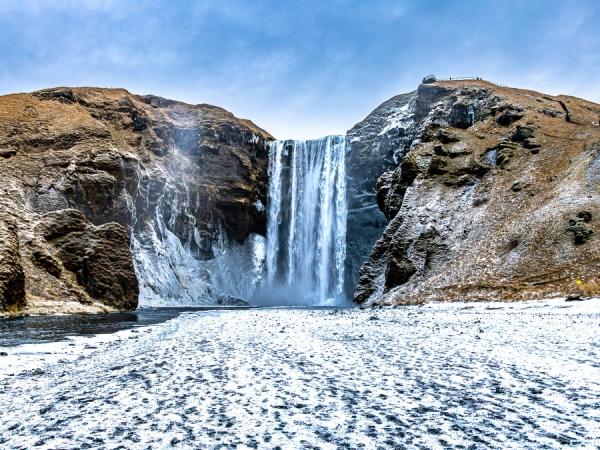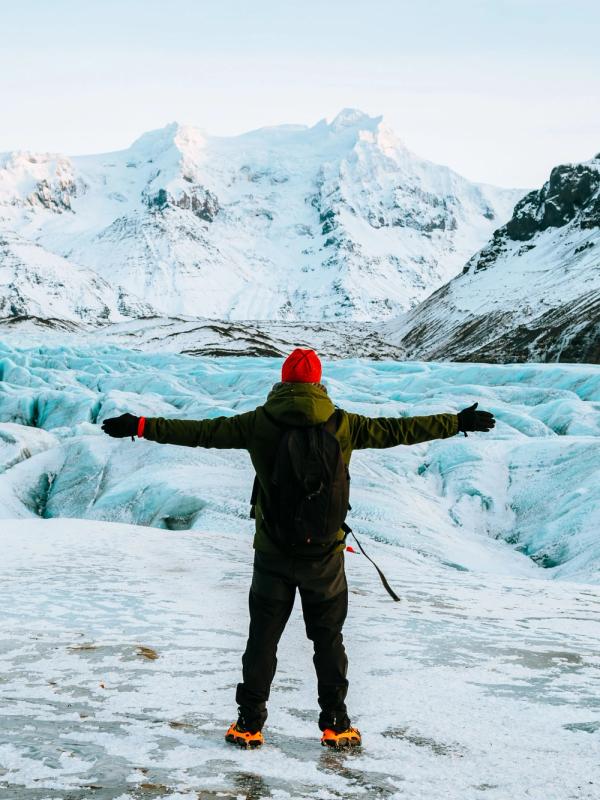
The 15 Best Things to do in Iceland in Winter
If you’re looking for a trip that combines fun and relaxation, winter in Iceland is a great choice. The shorter days give you more time to enjoy Icelandic food or relax in hot springs, but when you head out, you’ll find big, snowy waterfalls, ice caves, and quiet beaches. It’s also a great time for adventures.
Here are 15 things to do in Iceland during winter that let you experience the season differently.
1. Chase the Northern Lights
Seeing the Northern Lights is one of the best things to do in Iceland during winter. For the darkest skies, go to Þingvellir National Park or the Westfjords, where there’s little light. Dress warm, keep your eyes on the sky, and watch for streaks of green, pink, and purple moving overhead. It’s cold, but waiting for the lights is part of the fun.
To see the lights, check local forecasts and hope for clear skies. If you don't want to go alone, guided tours take you to the best spots. If you like exploring on your own, rent a car (if the weather is good) and drive around. Seeing the lights for the first time is something hard to forget.
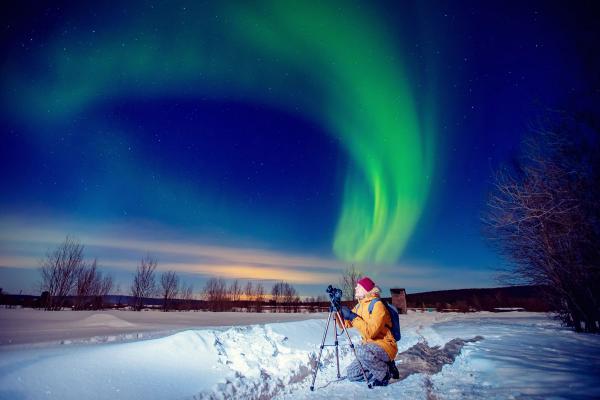
2. Explore Ice Caves (Katla or Vatnajökull)
Going into an ice cave is a unique experience. Water melts through the glacier, making tunnels with bright blue and clear walls that glow when you shine a light. The most popular caves are in Vatnajökull (Europe’s biggest glacier) and the Katla Ice Cave, near the Katla Volcano. In winter, the ice is safe for tours, so you can explore without worrying.
Inside, it’s quiet except for the sound of dripping water. Each cave looks different. You’ll probably want to take lots of photos. The floors can be slippery, so wear good boots and warm clothes. Tours give you the gear you need, and guides make sure everything is safe so you can just enjoy the view.
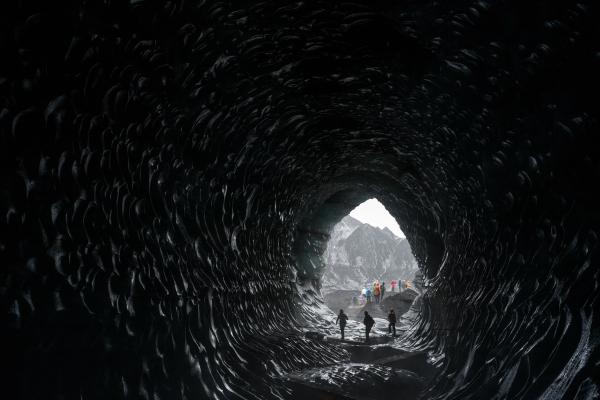
3. Take a Dip in Hvammsvík Hot Springs
Hot springs are a big part of life in Iceland, and Hvammsvík is a great spot close to Reykjavik. The pools face the sea, with amazing views of the fjord and a calmer atmosphere than the bigger lagoons. Sitting in the warm water while the cold air brushes your face feels pretty relaxing, especially with snow-covered hills in the background.
In winter, the steam from the pools stands out against the cold air. Hvammsvík is still pretty quiet, so it’s a nice place to relax. Bring a towel or robe because stepping out of the hot water into the cold breeze feels refreshing, but you’ll want something warm to wrap up in.
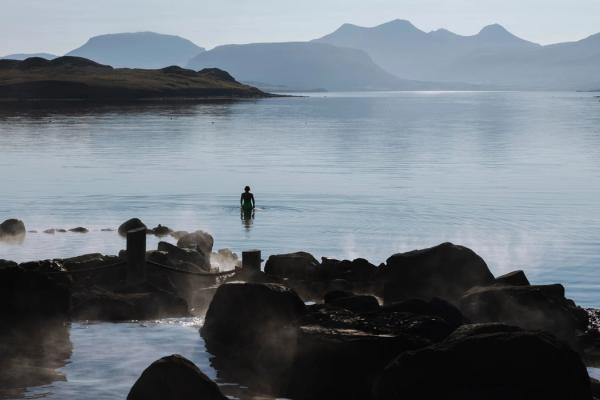
4. Visit Jökulsárlón Glacier Lagoon
Jökulsárlón Glacier Lagoon is one of the best places to see in winter. Big icebergs float in the water, some with black streaks from volcanic ash. You can do a boat tour to get even closer to the icebergs. Right next to it, Diamond Beach is a black sand beach covered with chunks of ice from the lagoon. It’s a really cool place to stop and look around.
The drive from Reykjavík takes about five hours, so it doesn’t do for a day trip. Instead, make it part of your winter itinerary along the Ring Road. Staying overnight is a good idea if you want to see the sunrise or maybe see the Northern Lights. It’s cold, especially with the wind, so bring warm clothes.
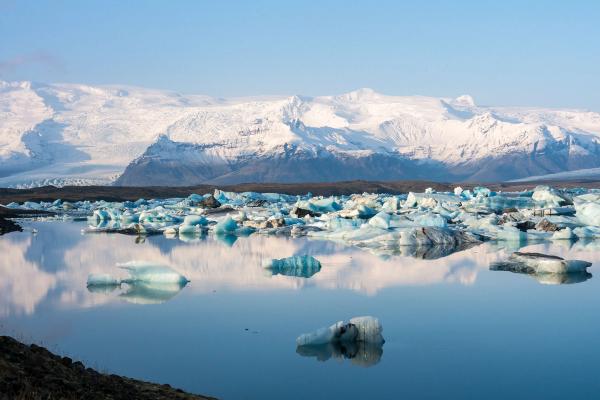
5. Drive the Snæfellsnes Peninsula
The Snæfellsnes Peninsula has glaciers, lava fields, and small fishing villages all in one place. Driving there in winter means seeing snow-covered volcanoes and dramatic coastlines. Sometimes, you can even spot whales near the shore. Villages like Arnarstapi and Hellnar are great for a break and a warm meal.
One of the highlights is Kirkjufell Mountain (which we’ll cover more in-depth later), but you have other cool sights like the Lóndrangar cliffs and the impressive Snæfellsjökull Volcano. The roads can be icy, so having a 4x4 and checking the weather beforehand is key. There are great views the whole way, so just driving makes the visit worth it.
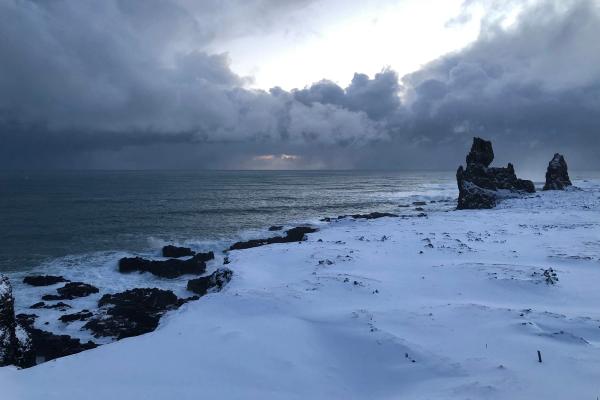
6. Snowmobiling on Langjökull Glacier
If you want to get your adrenaline pumping, try snowmobiling on Langjökull, Iceland’s second-largest glacier. The glacier stretches for miles, and riding across the snow feels like a real adventure. The wind and snow flying up behind you make it even more fun.
Tours provide helmets, gloves, and warm gear to keep you comfortable. Guides stop at spots with the best views. If you want something more active, snowmobiling is a great choice.
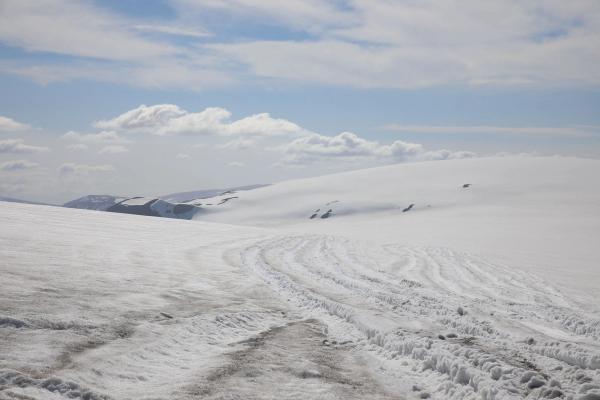
7. Walk Along Vík and Dyrhólaey
South Iceland’s black-sand beaches are well-known for a reason, and Vík is one of the best spots to see them. In winter, the mix of black sand, white snow, and crashing waves makes for an awesome view. Walking along Reynisfjara Beach, you’ll see sea stacks called Reynisdrangar rising from the ocean. It’s pretty impressive.
Not far from Vík, Dyrhólaey offers amazing views and a huge sea arch. The cliffs here are pretty wild, but be ready for strong winds, especially in winter. Photographers love capturing the waves smashing against the cliffs, and if you’re lucky, you might even see the Northern Lights over the water. Remember to dress warmly and stay back from the edges, as they can get slippery.
8. Visit the Raufarhólshellir Lava Tunnel
Only 40 minutes from Reykjavík, Raufarhólshellir is a big lava tunnel formed over 5,000 years ago. It’s cool to see any time, but winter makes it extra special – icicles hang from the roof, and snow makes the colors in the rock stand out even more. Guided tours give you helmets and flashlights so you can walk through safely while learning about the tunnel’s volcanic past.
Inside, you’ll see layers of lava in deep reds and browns, and light sometimes shines through openings above. It’s cold down there, so wear warm clothes. Most tours stop at spots where the ceiling has fallen in, letting light pour through and creating great photo opportunities. It’s a fun way to see Iceland’s volcanic side, and the snow above makes it even cooler.
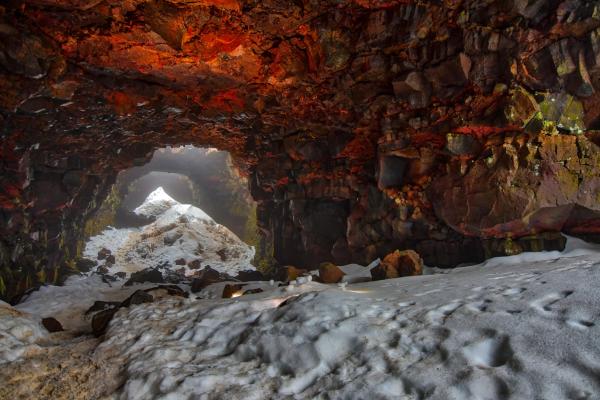
9. Catch the Winter Sun at Kirkjufell
We’ve already talked about Kirkjufell, but it’s worth singling it out. This mountain near Grundarfjörður is one of Iceland’s most photographed places. In winter, when snow covers the top and the Kirkjufellsfoss waterfall is partially frozen, it looks even better.
Since daylight is short in winter, sunrise or sunset is the best time to visit. The sky often turns soft pink and purple, reflecting on the snow and water. The roads can get icy, so check the conditions and take your time if you’re trying to get the perfect shot. Kirkjufell looks stunning even on cloudy days, so don’t let the weather prevent you from visiting it.
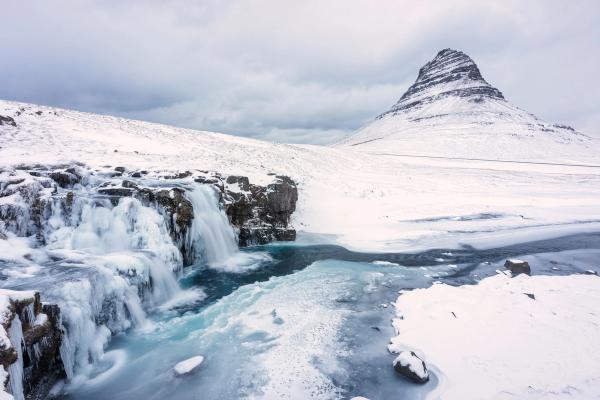
10. Explore the South Coast
A drive along the South Coast is full of must-see spots like Seljalandsfoss and Skógafoss. The waterfalls look amazing all year round, but winter brings a unique sight, with icicles hanging down and snow covering the ground. If it’s safe, you can walk behind Seljalandsfoss to get a different view of the water. Skógafoss is just as impressive, and sometimes, the mist freezes, making it look even cooler.
There’s more to check out along the way—basalt columns, glacier hikes, and black sand beaches that stand out even more in winter. The weather changes fast, so wearing layers and staying flexible with your plans is a good idea. The South Coast is one of the best routes in the whole country, and the best thing is that most of the important stops are just by the Ring Road.
11. Go Skiing in Akureyri or Dalvík
Iceland might not seem like a skiing destination, but the north has some great spots. Akureyri has slopes with views over the fjord, while Dalvík is smaller and feels more local. Both places are good for beginners and experienced skiers, and the mountains around you look incredible covered in snow.
You can also try cross-country skiing, snowboarding, or even snowcat skiing for something different. Snowfall can vary, so it’s worth keeping an eye on the weather. After skiing, warming up with lamb soup or hot chocolate is perfect. If you’ve got time, there are plenty of other places to see in North Iceland, from hot springs to volcanic sites.
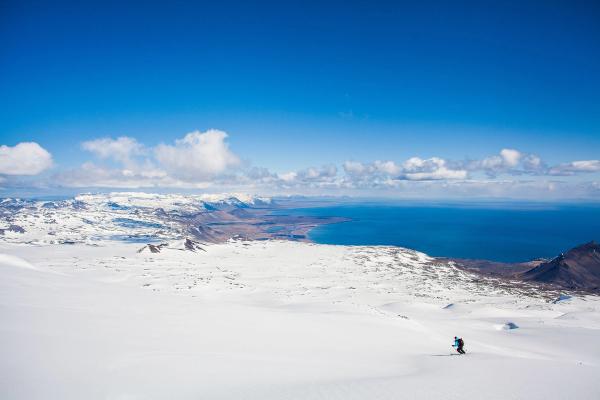
12. Photograph Goðafoss in Winter
Goðafoss, or the “Waterfall of the Gods,” looks great any time of year with its turquoise waters, but winter makes it even more stunning. Snow and ice gather around the waterfall, and sometimes parts freeze. The icy water flowing into the basin makes for amazing photos.
There are a few different viewpoints to get a good look at the falls. Sunrise or sunset gives you the best light, but even cloudy days are worth it. If you’re lucky, the Northern Lights might show up at night.
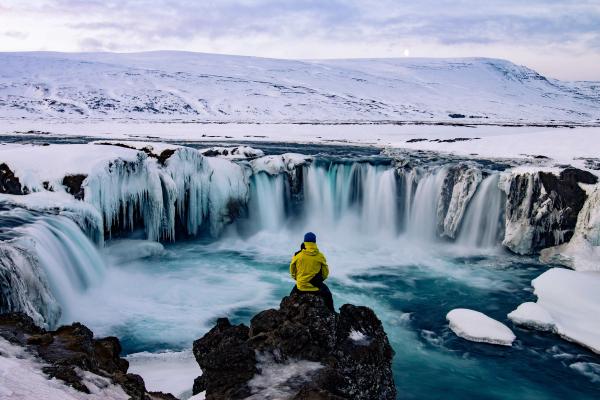
13. Visit Turf Houses at Glaumbær
If you want to learn about Iceland’s history, Glaumbær in the north is a great place to visit. The turf houses were built to handle cold winters, with thick turf walls that kept the heat in. In winter, the grass roofs look really cool against the snow.
Inside, you’ll see low ceilings, wooden beams, and small rooms that show how people used to live. Guides share stories about how families used the land and whatever they could find to stay warm. Visiting in winter helps you see why these houses worked so well.
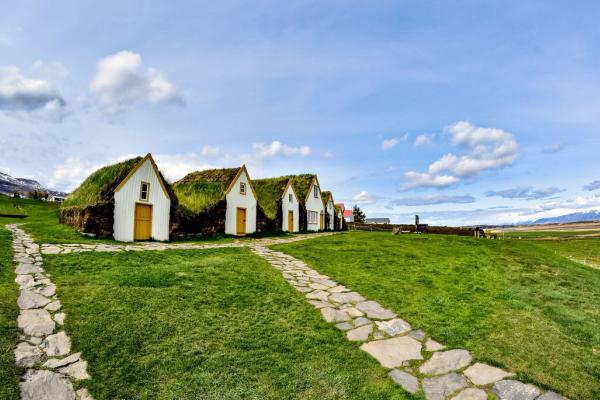
14. Explore the Reykjanes Peninsula
The Reykjanes Peninsula is close to Reykjavík and is perfect for a winter trip. It’s not as crowded as other places but has plenty to see—lava fields, hot springs like Gunnuhver, and lighthouses on cliffs. With snow and steam rising from the ground, it feels really peaceful.
Since there aren’t as many people, you can enjoy the views without rushing. Don’t miss the Bridge Between Continents, where you can walk from the North American tectonic plate to the Eurasian plate. If the sky is clear, you might even see the Northern Lights. After exploring, stop at a Grindavik for some fresh seafood. You were probably not expecting this, but the famous Blue Lagoon is located here in the Reykjanes Peninsula.
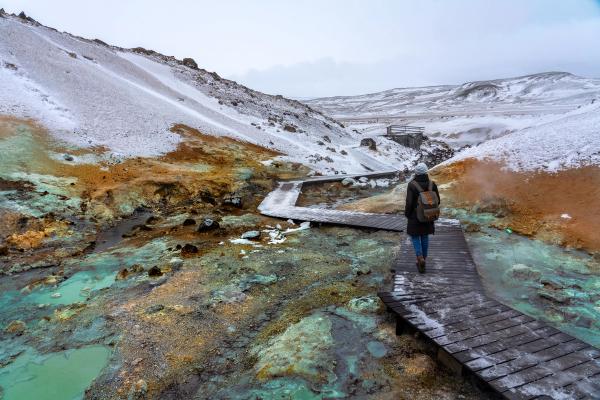
15. Attend the Reykjavík Winter Lights Festival
In February, Reykjavík celebrates the return of longer days with the Winter Lights Festival. The city lights up with displays, concerts, art shows, and events. It’s a fun way to enjoy winter and see the city in a unique way.
A big highlight is Museum Night, when museums stay open late and sometimes let people in for free. You can check out art, history, and science exhibits while enjoying the lively vibe. Even if you don’t visit during the festival, Reykjavík’s cafés and nightlife make winter fun. But if you can go during the festival, it makes the trip even better.
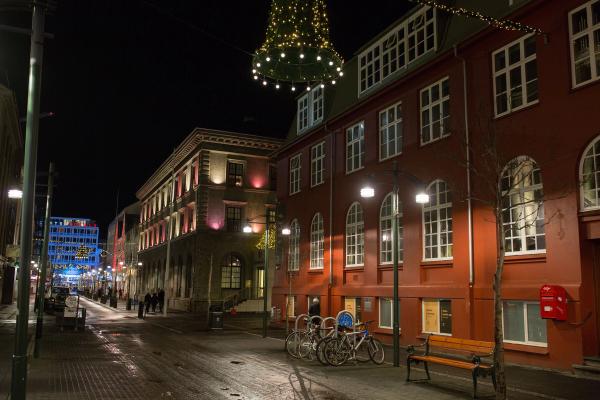
Conclusion
Winter in Iceland is full of contrasts—frozen waterfalls, snowy landscapes, and skies lit by the northern lights. The cold and the snow make it even more special, whether you’re in a hot spring or riding a snowmobile. With ice caves and local festivals, there’s a mix of adventure and relaxation. The weather can change quickly, and daylight is short, but that’s part of what makes it special. Dress warm, stay flexible, and enjoy the season.

